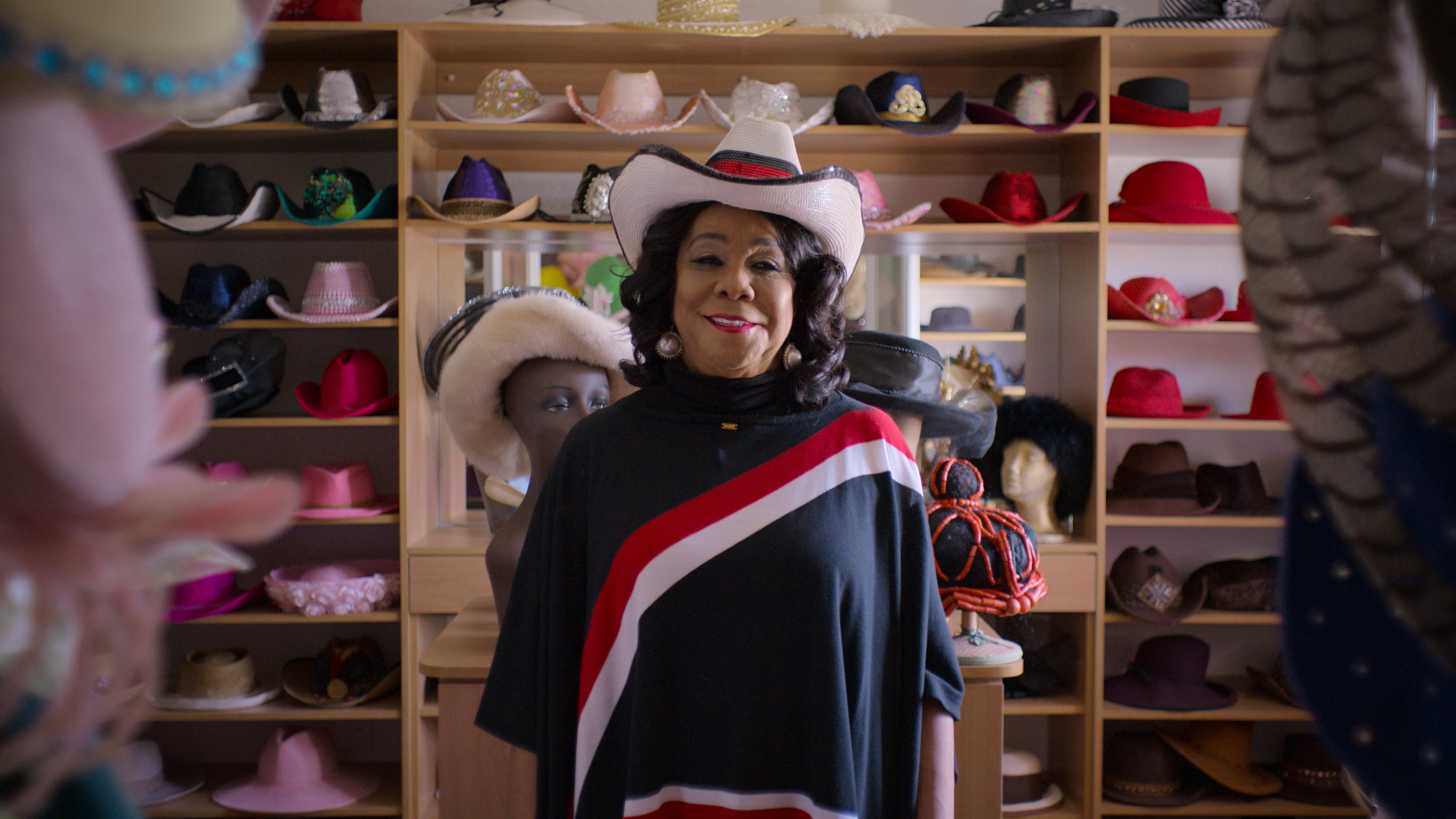'Worn Stories' is a closet packed with heartwarming treats on Netflix
Worn Stories finds meaning in clothing from Tina Turner's sax player to Rep. Frederic Wilson.

This post contains spoilers for Worn Stories.
What links Tina Turner, the “Miracle on the Hudson,” Hurricane Sandy, and a female wrestler in Las Vegas? Rather than an obscure trivia night question, new Netflix docuseries Worn Stories provides the thread between these events and figures. Based on Emily Spivack’s 2014 book of the same name (she also appears in the third episode) and the New York-based follow-up Worn in New York, this heartwarming series is a collection of mini-memoirs told through a clothing prism. Some of the figures featured might be familiar, but on the whole, the element of normalcy is part of Worn Stories’ appeal. You don’t need to be famous to have an extraordinary outfit tale that represents the person you are. Unlike Netflix’s Queer Eye and Tidying Up With Marie Kondo, there is no disposing of items cluttering up your closet. Going beyond fashion fads, this series considers the narratives behind what we wear.
Filming began in the fall of 2019, capturing daily habits and special performance pieces — whether on stage or an important life event. Over the last year, clothing habits have undoubtedly changed from the face masks that are an essential item to the tops purchased because they look good on a video conference call. Last April, clothing sales in the US fell by 79 percent but sweatpants purchases rose by 80 percent as lockdown and working from home became the norm. Buying branded merchandise to support local stores or eateries to supplement income lost is one big trend that continues in 2021. Not only are these clothing items comfortable but the connection to a favorite local business adds an additional feel-good factor that has been lacking over the last 12-plus months. It is easy to imagine a lockdown version of this book, in which certain items have provided protection, a nostalgic glow, or made us feel fancy with nowhere to go — my personal go-to is to wear a necklace and earrings from The Americans. Even during the pandemic, there are ways to glam up a look whether it is dressing for a wedding held over Zoom, choosing a celebratory outfit to get vaccinated in, or indulging in cosplay for virtual Comic-Con. Despite the big changes over the last year, spectacles via your wardrobe are still possible and the scope for meaning is limitless.
Combining talking heads, archival footage, and animation to depict the different stories, each episode also has a broad theme. Open to interpretation these include “Lost and Found,” “Beginnings,” and “Survival.” So whether it is the homemade silk tie collection that is salvaged from the wreckage caused by Hurricane Sandy, the boots worn on a flight that ends in the River Hudson, or a female wrestler finding her place in the competitive arena, our possessions spark more than joy. From babies to seniors, this journey covers huge swaths of the United States and doesn’t require an intense fascination with clothing to enjoy. “My own closet is full of clothes; it is also an archive of experiences, adventures, and memories,” wrote Spivack in the introduction to the book from which Worn Stories is based on and this sentiment prevails throughout. Below are five highlights from the series.
Tina Turner’s Codpiece Gift (Episode 2 “Lost and Found”)
“Never do a gig without a codpiece,” is Timmy’s advice in the second episode. This particular item was bought by Tina Turner in a Berlin S&M store while on tour. “That’s what I want on my stage,” he recalls the iconic singer telling him when she gave him the leather studded accouterment to wear. Timmy is a professional saxophonist and he toured with Turner’s band for 15 years playing the signature ‘80s sax solo. Trends change and soon the sax solo fell out of favor; his career dried up in the process. This story is one of a garment that gives a performer confidence, creates a persona, and can lead to a revived career. What was lost can be found again through the clothes we wear.
First New Outfit in 41 Years (Episode 3 “Beginnings”)
Throughout the eight episodes, there are several stories that explore incarceration and the loss of identity. The term “dress outs” can refer to the physical education attire but in prison terms, it refers to the clothes worn by a person when they are released. In some cases, this will be the clothes they arrived in or what has been provided by family or friends. If neither is an option, “dress outs” come from the prison supply, which are often oversized and feed into negative stereotypes. In Blythe, California, Carlos is part of the Ride Home program that ensures people who are released from prison are given the tools to get back on their feet. This includes the first meal and helping shop for a set of clothing. The latter helps reshape an identity that has been lost during the sentence served, and Carlos also discusses the outfit he wore when he was released — a Dodgers jersey sent by his family. In “Beginnings,” Carlos picks up Rudy who has been in prison for 41 years (who recalls the six-pocket Levi's and Pendleton he wore the day he went in). Beginnings come in many different outfits and at any age.
B’nai Mitzvah (Episode 4 “Growing Up”)
Religious ceremonies often come with an expected (and often loose) outfit suggestion whether gowns for a christening or a white dress for a wedding. Soon-to-be teenager Spirit is about to have their b’nai mitzvah, which they explain is “essentially graduating into Judaism.” When Spirit was 11 they came out as non-binary and changed their name to something gender-neutral. This was also when they realized an alternative name for the coming of age ritual was required as bar and bat mitzvahs are gendered terms. “It was usually used to describe multiple b’nai mitzvot, but since I am neither, I decided that’s what I’m gonna do,” Spirit explains the “b’nai” definition. Thrifting with their dad — and later their friends — to find the ideal b’nai mitzvah outfit is an important part of this journey. How we dress is part of our identity and Spirit’s celebration with the support of their family and community is one of several beautiful moments in this docuseries.
The latest updates, reviews and unmissable series to watch and more!
Political Attire (Episode 5 “Uniform”)
Uniforms serve a variety of purposes including aiding survival for professions like firefighters or helping a lawmaker stand out. In the case of the latter, Frederica Wilson discusses wearing bold ensembles in her role as a member of the US House of Representatives, and the origins of this signature statement. Clothing is political whether is the white suit worn by Vice President Kamala Harris the night the election was called in 2020 as a nod to the Suffragettes or Deb Haaland’s traditional Native garment she was sworn in wearing a few weeks ago. “I have to be all matched from head to toe,” Wilson explains regarding this daily rotating uniform. The hat inspiration and fastidious attention to detail are an ode to her grandmother. Wilson’s political drive comes from the civil rights meetings her father held in their home, and the desire to wear a hat within this policy-making arena is because people can’t ignore you when you’re wearing a bold accessory.
‘80s Aerobics Leggings (Episode 7 “Survival”)
“When I arrived in Los Angeles, I just brought my party clothes,” Simon explains about coming to California in the early ‘80s. The Stephen Sprouse leggings he has kept from this time represent the aerobics scene (think Jamie Lee Curtis thrusting in Perfect), the partying, the Maxfield boutique he worked at as a window dresser, and the AIDS epidemic that ripped through the gay community. Simon discusses the paradox of living in LA during this time when his friends started getting sick (and dying) and he found sanctuary in the Sports Connection gym, his playful leggings, and the frivolity of aerobics.
Worn Stories is available to watch on Netflix now.
Emma Fraser spends most of her time writing about TV, fashion, and costume design; Dana Scully is the reason she loves a pantsuit. Words can also be found at Vulture, Elle, Primetimer, Collider, Little White Lies, Observer, and Girls on Tops. Emma has a Master’s in Film and Television, started a (defunct) blog that mainly focused on Mad Men in 2010, and has been getting paid to write about TV since 2015. It goes back way further as she got her big start making observations in her diary about My So-Called Life’s Angela Chase (and her style) at 14.


